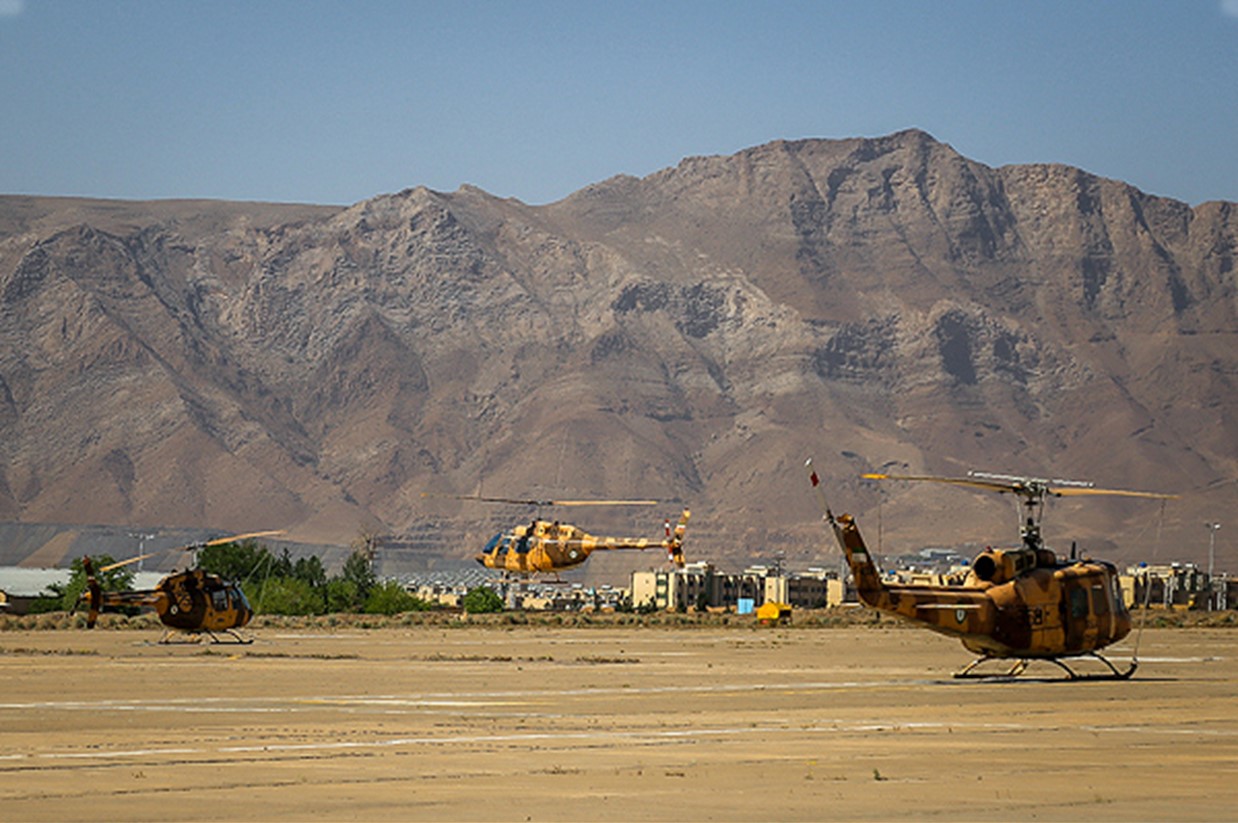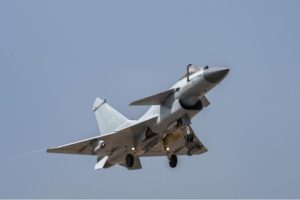
Spotlight on Vatanpour, Iran’s “Most Active” Airbase
By Michael Rubin

Shahid [Martyr] Vatanpour Air Base, Isfahan
“If the army helicopters were not present, the costs in blood and treasure…would have been far greater.”
When the Iranian Air Force makes news, it is often for bad reasons, such as when its aging jets crash.[i] The excerpted article from Iranian news outlet defapress.ir features the Shahid Vatanpour Army Air Base south of Isfahan, providing some previously under-reported detail on the fact that it is a logistics and training base.[ii] The article also provides insight into activity and flight hours flown at Vatanpour and other air bases. For instance, the 168-fold difference in hours flown between Vatanpour and the Tehran Army Air Base is striking (366,477 vs. 2,177 hours). As a training base, it makes sense that there would be many flight hours logged at Vatanpour. However, delegation may be part of the enormous number of hours flown out of the base with Vatanpour being more central, less congested, and better suited as a logistical hub. Additionally, the metrics may be somewhat skewed because Iran stations certain F-14s at Tehran’s Mehrabad International Airport rather than at the Army Air Base, and the Islamic Revolutionary Guard Corps (IRGC) operates airliners for military transport and logistics under the guise of passenger and cargo planes.
The aircraft themselves also tell a story. The short number of flight hours for the Chinooks stationed at Vatanpour may reflect, both the small number of Chinooks that remain in service and their poor condition.[iii] The inventory of Bell Helicopters has likewise shrunk, though the smaller platform and easier access to spare parts enables greater flight time.[iv] The excerpted article itself may serve another purpose as well. While the IRGC can rely on its many business interests to increase its official budget by more than an order of magnitude,[v] the regular Army has no such recourse. Even with the end of many international sanctions, funding remains limited. By highlighting the importance of Vatanpour, the IRGC may be seeking to protect the base should the Army’s top brass be considering an Iranian equivalent of a base realignment commission.
Sources:
“Paygah-e Isfahan: Fa’altarin Paygah-e Havaniroz Artesh” (Isfahan Base: The Army’s Most Active Air Force Base),” defapress.ir (official news agency of Iran’s defense ministry), 14 January 2024. https://defapress.ir/fa/news/644683
The Army Ground Forces are among the most influential forces that comprise the armed forces of our country. Within the ground forces is the Islamic Republic of Iran Army Aviation, colloquially known as “Havaniruz,” that has performed many missions in its existence, especially since the victory of the Islamic Revolution when it participated prominently in battle, security, and relief operations. In many cases, if the army helicopters were not present, the costs in blood and treasure we may have paid would have been far greater. The pilots of the Islamic Republic of Iran Army Aviation carry out both helicopter and fixed wing missions. The Chinook pilots have the least numbers of flights, and the [Bell] 209 [Cobra], [Bell] 205, [Bell] 206, and [Bell] 214 pilots the most flight hours. The fixed-wing pilots also fly with [Dassault] Falcons, [Fokker F-27] Friendships and [Rockwell 690] Turbo Commander jets from Iran Army airbases in Tehran, Mashhad, Abyek [Qazvin], Masjid Suleiman, Khuzestan, Kerman, Kermanshah and the general support group and Vatanpour training center in Isfahan…. In the fixed-wing sector, Falcon jet pilots have the lowest number of flights and Turbo Commander pilots have the highest number of flights.In addition, the pilots assigned to the Islamic Republic of Iran Army Air Force base in Tehran recorded the least flight time with 2,177 hours, while the pilots assigned to the Shahid Vatanpour base in Isfahan recorded the highest amount, with 366,477 hours.
Notes:
[i] For previous discussion of Iranian fighter jet crashes, see: Michael Rubin, “Iranian F-14 Crash Highlights Iran’s Need for New Fighter Contract” OE Watch, 08-2022. https://fmso.tradoc.army.mil/2022/iranian-f-14-crash-highlights-irans-need-for-new-fighter-contract/
[ii] The Iranian air forces are often subordinate to other branches of the Iranian military. Within both the regular Army and in the IRGC, the ground forces and navy are more prominent. In 2008, the Air Defense Force split from the Army’s Air Force to become its own distinct military branch focused on anti-aircraft capabilities. The IRGC, meanwhile, folds the role of its air force into the strategic missile and space forces, both of which outshine Iran’s aging jetfighters and other military aircraft. While Tehran spotlights its satellite launches and precision missiles, the bulk of its manned air force dates from prerevolutionary days with most aircraft more than a half century old.
[iii] Prior to the 1979 Islamic Revolution, Iran’s Chinooks numbered more than 100. They were once a workhorse for the Iranian Army. Famously, less than a year before the Islamic Revolution, four Iranian Chinooks strayed into Soviet airspace during a training mission, leading to the downing of two, with eight fatalities. Today, the Iranian Army Air Force may have at most two in service, the rest destroyed during the Iran-Iraq War, through attrition, or cannibalized for spare parts.
[iv] For background into Iran’s efforts to keep its helicopter fleet flying, see: Michael Rubin, “Iran: Reconstruction and Overhaul of Helicopters” OE Watch, March 2021. https://community.apan.org/wg/tradoc-g2/fmso/m/oe-watch-past-issues/368233/download
[v] For background about the Islamic Revolutionary Guard Corps’ economic interests, see: Michael Rubin, “The IRGC Wins Multibillion Dollar Economic Projects” OE Watch, August 2018. https://community.apan.org/wg/tradoc-g2/fmso/m/oe-watch-past-issues/241432/download
Image Information:
Image: Shahid [Martyr] Vatanpour Air Base, Isfahan
Source: https://www.ibena.ir/files/fa/news/1401/9/27/24702_342.jpg
Attribution: defapress.ir
Distribution A: Approved for public release
Categories:
Tags:
Related Products
Chinese Military Exercises Highlight Improvements in Joint Operations
North Korean Media Stays Quiet Despite Global Concerns






